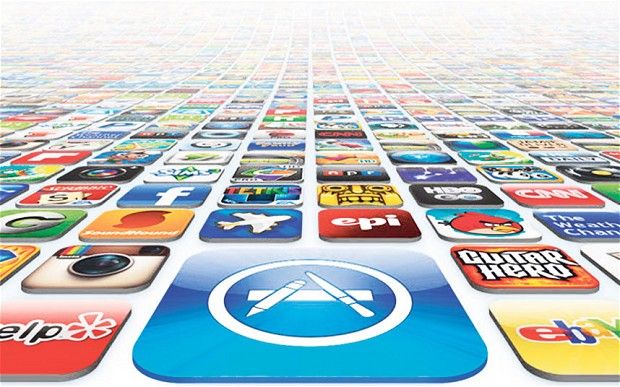By: Bob Kernen
This past Sunday was the eighth anniversary of Apple’s launch of the App Store. It was originally part of an add-on to iTunes (remember that?) and designed to enable iPhone users to download small pieces of software (apps) that would provide all manner of tools and toys to make their iPhone more useful. Essentially, it did for the iPhone what iTunes had done for music – made it simple and easy to get what you wanted whenever you wanted it.
But the road to apps was circuitous for Apple. The iPhone first came out a year earlier in 2007. While it was a hit, it was not a breakthrough device for Apple. A big sticking point was Steve Jobs’ reluctance to allow third party app developers (like us) to create mobile applications for iPhone. In fact, Forbes contributor, Mark Rogowsky, calls it Jobs’ “biggest blunder.”
In his Steve Jobs biography, Walter Isaacson tells the story of how Apple board member Art Levinson phoned Jobs a dozen times to lobby on behalf of outside developers creating apps for the iPhone. The rest, as they say, is history.
Amazingly, Apple’s App Store launched with just 522 apps. Of those, 80% came with a price tag of at least 99¢. That trend has reversed as most apps now are free. As Statista’s dynamic chart shows, there are now 2 million mobile apps in the App Store. And Apple takes a 30% cut of all revenue produced in these apps. For them – and for us – apps have turned out to be a pretty scalable business model.

The late Gordie Howe would agree this trajectory is even better than so-called “hockey stick growth.”
Once those apps were out in the world, people fell in love, and before long, Apple was selling its iPhone 3 with a catchy ad campaign pointing out that, “There’s an app for that.” And there was. Things quickly evolved from apps that mimicked the sound of flatulence to ones that told you just how many calories you were burning, or that made the concept of “getting lost” obsolete.
Of course it wasn’t long before Google jumped into the game with its Android platform, and we were off to the app races. Over the past eight years, everything from time spent (almost 41 hours a month) to apps/phone (30+) has grown as we’ve become increasingly addicted to our phones and their many little tools. Today, the Facebook app accounts for the majority of the social network’s traffic, and mobile streaming recently passed desktop streaming in total hours delivered.
jacapps owes its very existence to the existence of the App Store. It was just 100 days after this Apple launch that jacapps was born, after an employee of our sister company Jacobs Media (and an iPhone early adopter), Tim Davis, declared, “We should make apps.”
Those guys saw it coming through their Techsurveys that clearly showed the meteoric rise of smartphones. Of course, jācapps was launched during the worst of the Great Recession, so you have to give the Jacobs Media team kudos for vision and nerve.
And they helped us better understand the public’s addiction to apps in the “Goin’ Mobile” ethnographic study they put together with Arbitron that provided depth, clarity, and human stories to the growing app culture.
So clearly the mobile app is no flash in the pan. Apps are here to stay, and in fact, have influenced the way software tools are delivered everywhere. Beyond smartphones, apps are now ubiquitous (in fact jācapps has addressed this with our App Everywhere℠ program). We develop apps that work in your car, like Apple CarPlay and Android Auto, on your television (like AppleTV), and even on your wrist (AppleWatch). Apps have thrived because they are efficient little problem solvers, and they keep evolving, and becoming ever more powerful and useful. It seems that today, everything’s an app.
And at any point in time, apps can become a runaway hit. Right now, the Pokémon GO app has an estimated 8 million downloads in the U.S. alone, netting $1.6 million in daily revenue. Yes, Apple (and Google) are collecting a lot of money from this phenomenon that just started a few short days ago but have become buzzworthy and very profitable.

So for us, the conversation of mobile apps is very much rooted in radio. In the early years, many stations simply bought (or bartered for) the least expensive app they could find just to check off that digital requirement. Today, we’ve learned that a one-dimensional app or one that simply does not feature a great UX (User Experience) is tantamount to not having one at all.
Like everything else in the digital ecosphere, apps require a strategy, a strong connection to the brand, and a plan that includes marketing and revenue generation. With so many apps in both Apple and Google’s respective app stores, the bar has most definitely been raised.
The Apple App Store’s birthday means that jacapps will soon celebrate its 8th birthday, too. During this wild and woolly period, we’ve created more than 1,000 apps, and we’ve learned a ton about the space and what it means to the radio broadcasting industry.
So hats off to Apple for setting us all on this path. Yes, Virginia, there’s an app for that. The only question you have to answer (to quote another popular tech slogan) is: “Where do you want to go today?”
And I’ll be sure to use the Zippo Lighter app when jacapps’ birthday rolls around this fall.
If you want input on your mobile strategy, or want to learn more about monetizing your mobile assets give us a call at 248-353-9030, or email sales@jacapps.com.


